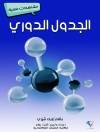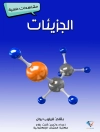Multi-target drug discovery (MTDD) is an emerging area of increasing interest to the drug discovery community. Drugs that modulate several targets have the potential for an improved balance of efficacy and safety compared to single targets agents. Although there are a number of marketed drugs that are thought to derive their therapeutic benefit by virtue of interacting with multiple targets, the majority of these were discovered accidentally. Written by world renowned experts, this is the first book to gather together knowledge and experiences of the rational discovery of multi-target drugs. It describes the current state of the art, the achievements and the challenges of the field and importantly the lessons learned by researchers to date and their application to future MTDD.
Содержание
Preface; Forewords; Simple drugs do not cure complex diseases — the need for multi-targeted drugs; Clinical Need and Rationale for Multi-Target Drugs in Psychiatry; Drug molecules and biology: network and systems aspects; Chemoinformatic approaches to target identification; In vitro Panel Screening — Biological Fingerprinting; Phenotypic and in vivo Screening; Lead Discovery and Drug Repurposing; Target/s identification approaches — experimental biological approaches; Historical strategies for lead generation; In silico Lead Generation Approaches in Multi-Target Drug Discovery; The challenges of multi-target lead optimization; Combination agents versus multi-targeted agents — pros and cons; CASE STUDIES: The Discovery of Lapatinib; Identification and optimization of dual PI3K/m TOR inhibitors; Discovery of HDAC-inhibiting multi-target inhibitors; Targeting protein-protein interactions; dual inhibitors of Bcl-2 and Bcl-x L; Discovery of the anti-psychotic drug, Ziprasidone; The Rational Design of Triple Reuptake Inhibitors for the Treatment of Depression; Discovery of multi-target agents for neurological diseases via ligand design; Designing Drugs with Dual Activity: Novel Dual Angiotensin II and Endothelin Receptor Antagonists; Case study 10: Ethyl Urea Inhibitors of the Bacterial Type II Topoisomerases DNA Gyrase (Gyr B) and Topoisomerase IV (Par E); Epilogue; Index
Об авторе
Richard Morphy gained his BSc (1995) and Ph D (1989; supervisor: Prof. David Parker) in Chemistry from University of Durham 1989-1995: Medicinal chemist at Celltech, Slough, UK working on oncology and inflammation projects 1995-to date: Section head / Senior Research Fellow at Organon/SPRI/MSD, Newhouse, Scotland working on CNS and CV projects. He has an extensive track record of research, publications and presentations in the area of multi-target drug discovery (MTDD). John Harris gained his BSc.(Chemistry, 1999) from University of Exeter; Ph D (Chemistry, 1974) from Queen Mary College, University of London (Supervisor: Prof. B.C.L. Weedon FRS) Postdoc study 1973-1975 with Prof. C.W.Rees at University of Liverpool. 1975 — 1982 Medicinal Chemist at Wellcome Labs, Beckenham, working on cardiovascular projects. 1983-1988 Principal Scientist 1989 — 1995 Head of Cardiovascular Area, Wellcome UK. 1996 — 2008 Founder and CSO of Bio Focus (now division of Galapagos); 2009 — to date, independent pharma/biotech consultant. Comprehensive track record of research, publications and presentations in the areas of enzyme inhibitors, prostaglandins, compound library design, kinase drug development in oncology, inflammation and CNS, and multi-targeted drug discovery.












